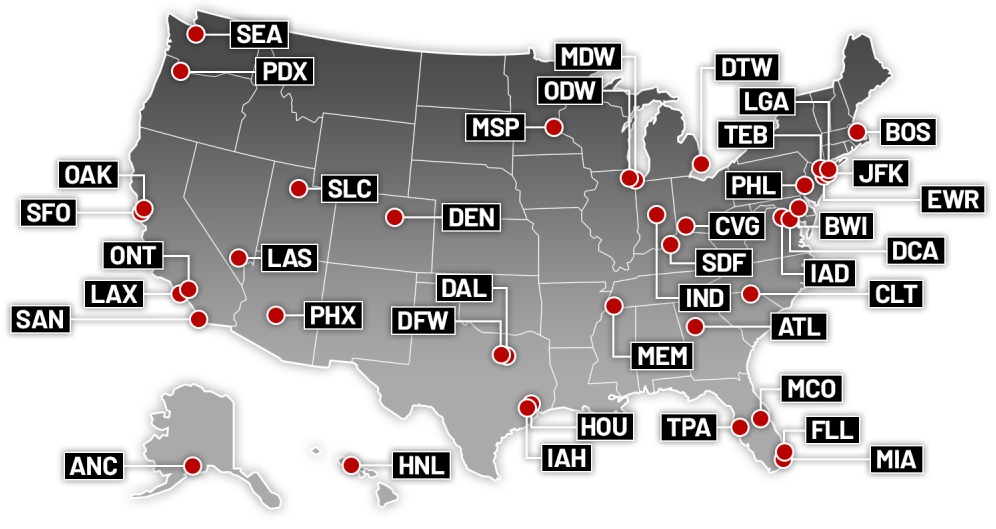Aerowise informs its clients and operators that, following the recent United States federal government shutdown, the Federal Aviation Administration (FAA) issued an Emergency Order that has significantly affected air operations across North America.
Although Congress passed a funding bill on 10 November, expected to end the shutdown once signed into law, the FAA has not yet lifted any of its traffic limitations or BizAv restrictions. Therefore, all previously published restrictions remain in effect until further notice.
Current Situation
The Emergency Order, issued on 7 November, mandates a reduction in daytime operations (06:00 to 22:00 LT) at 40 high-impact airports, with a progressive decrease in scheduled airline flights from 4% to 10%.
A subsequent series of NOTAMs released on 10 November further escalated the measures, temporarily restricting most Business Aviation (BizAv) operations at 12 major airports, including:
ATL, BOS, DCA, DEN, DFW, EWR, IAH, JFK, LAX, ORD, PHX, and SEA.
These restrictions currently apply to the following 40 airports under the FAA order:
ATL, AUS, BOS, BWI, CLT, CVG, DCA, DEN, DFW, DTW, EWR, FLL, HNL, HOU, IAD, IAH, JFK, LAS, LAX, LGA, MCO, MDW, MIA, MSP, ORD, PDX, PHL, PHX, RDU, SAN, SEA, SFO, SJC, SLC, STL, TPA, DAL, HPN, OAK, and SAT.

During this period, only based aircraft, emergency flights, government operations, or flights holding special FAA authorisation are permitted to operate from these airports.
Operational Implications
While on-demand Part 135 and private Part 91 flights are not part of the mandatory airline reductions, they continue to face indirect impacts due to congestion, flow programmes, and slot limitations at the affected airports.
Surrounding satellite airports—such as HPN for JFK, VNY for LAX, MDW for ORD, and DAL for DFW—are experiencing increased demand, potential parking shortages, and longer ground times as displaced traffic seeks alternate solutions.
Although the funding deal should gradually allow for a return to normal operations, ATC recovery will not be immediate. Prolonged six-day schedules, extended shifts, and financial strain have left the FAA short-staffed, meaning that flight-reduction orders and slot programmes will likely remain active for several weeks as capacity is rebuilt.
Recommendations for Operators
Aerowise advises clients and flight crews to:
- Review NOTAMs daily for updated or extended restrictions.
- Include alternate airports in flight planning.
- Anticipate operational delays, reroutes, and increased ground times.
- Communicate proactively with passengers about potential rescheduling or logistical adjustments.
Aerowise Commitment
In light of these ongoing restrictions, Aerowise reaffirms its commitment to pilots and operators through every stage of their operations. Situations such as these underscore the importance of reliable, proactive ground handling and operational coordination, where flexibility and real-time support are vital.
Our team remains available 24/7 to assist with slot management, permit coordination, fuel arrangements, and dispatch operations, ensuring that every flight continues to operate safely, efficiently, and with minimal disruption, despite external challenges.
At Aerowise, we stand beside the crews who keep business aviation moving — wherever the mission takes them.
ops@aerowise.aero
www.aerowise.aero
¿Querés que ahora te lo traduzca al español en formato institucional para la segunda mitad de la nota o para una versión bilingüe completa (inglés/español)?

